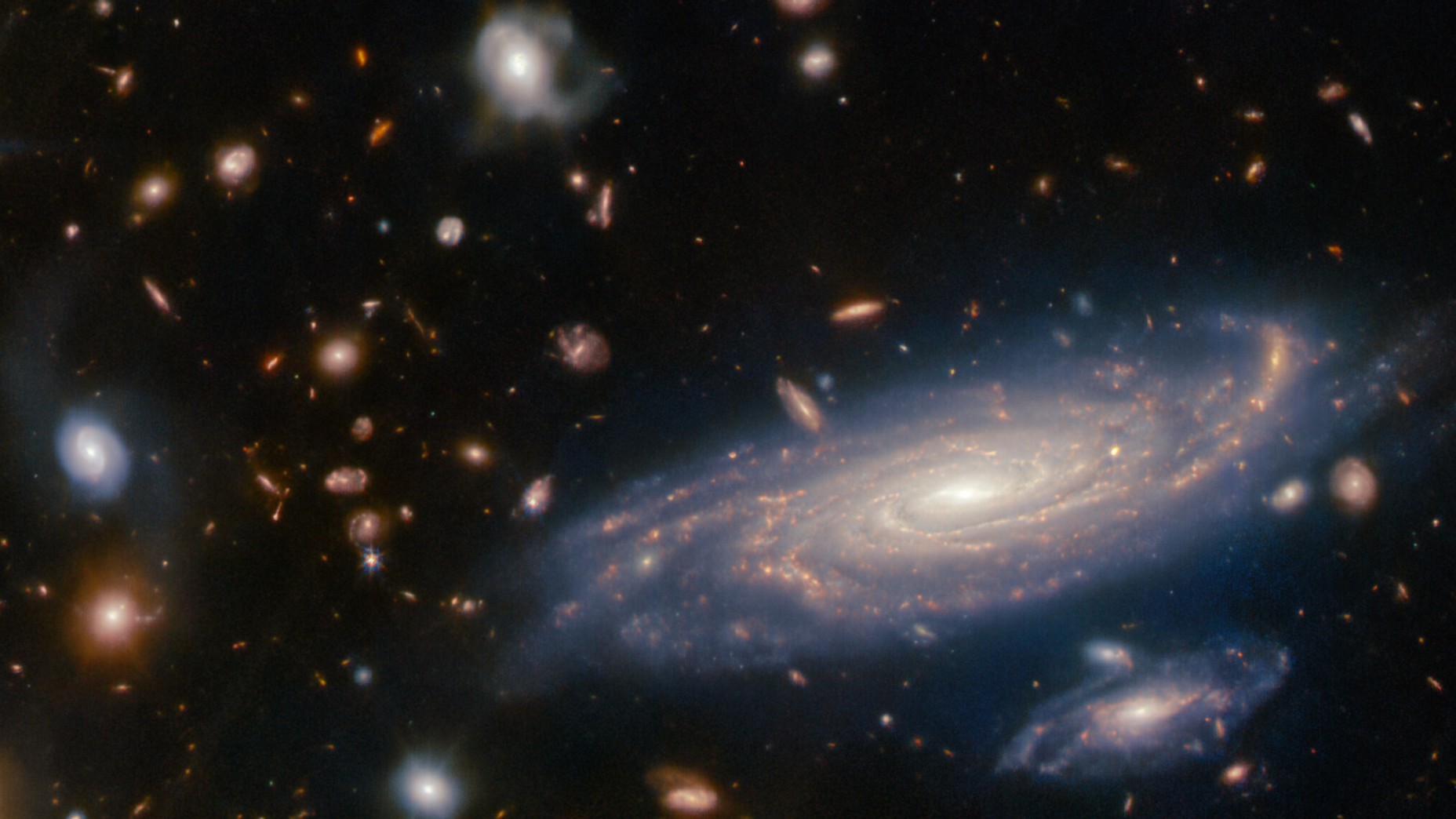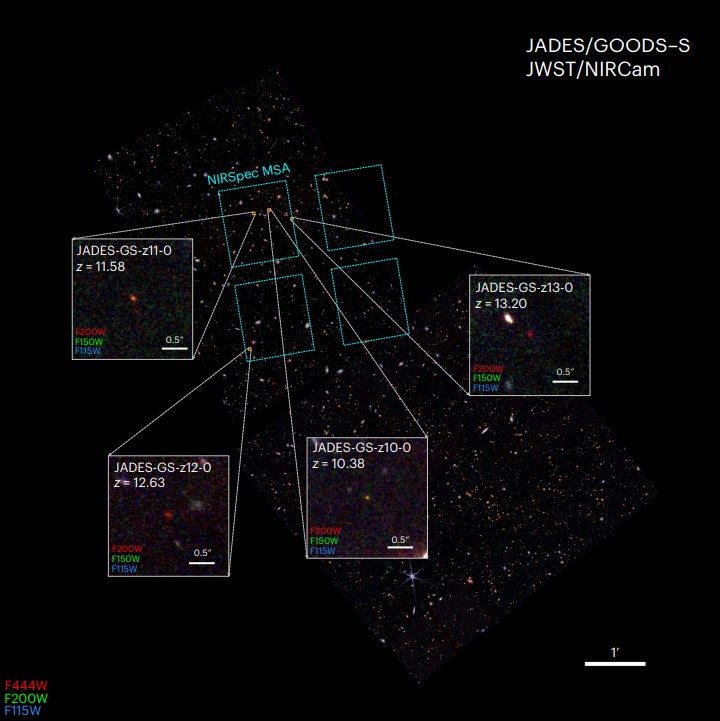James Webb telescope discovers the 4 oldest galaxies in the universe, born just 300 million years after the Big Bang
Astronomers using the James Webb Space Telescope have detected the four oldest galaxies in the known universe, which are forming stars much faster than thought possible.

Astronomers using the James Webb Space Telescope (JWST) have just discovered the four most distant galaxies ever seen, located a little over 13 billion light-years from Earth. This means astronomers are seeing what galaxies looked like only 300 to 500 million years after the Big Bang, in the infancy of our now almost 14 billion-year-old universe, according to two new studies published April 4 in the journal Nature Astronomy.
"The frontier is moving almost every month," Pieter van Dokkum, a professor of astronomy at Yale University who was not involved in the studies, said in a commentary published in Nature Astronomy. There are now "only 300 million years of unexplored history of the universe between these galaxies and the Big Bang," van Dokkum added.
This may sound like familiar news, as several studies have recently claimed possible detections of even older galaxies using JWST in the past few months. The four newly discovered galaxies are different, though — astronomers have actually confirmed these are ancient galaxies and not some other celestial body, or a closer-by galaxy masquerading as a more distant one.
For nearby galaxies, astronomers usually use color to estimate redshift, a parameter that describes distance as light waves stretch and turn redder while zooming across the expanding universe. However, this technique is a dicier choice when exploring wholly new frontiers like those being studied with JWST. In what van Dokkum describes as a "technical tour de force," the authors of the new research used detailed measurements of the galaxies' spectra, or the range of light they emit over different frequencies, to double-check the accuracy of the redshifts.
These four galaxies exist in the epoch of reionization, a time when astronomers think the first stars were being created. Once they confirmed the galaxies' ages, the researchers sized up the galaxies’ stars, finding that they were quite small, at least compared with our Milky Way. But the galaxies were also creating stars at a fast pace — something that was "surprising so early in the universe," study co-author Stéphane Charlot, a researcher at the Astrophysics Institute of Paris, told the French news agency AFP.
The galaxies also don't appear to contain any particularly complex elements, suggesting that their stars haven't yet had time to create heavier elements and are instead made of the original hydrogen and helium atoms from the early universe, according to the researchers.
Get the world’s most fascinating discoveries delivered straight to your inbox.
"Galaxies had to grow up fast indeed," van Dokkum wrote, referring to the 300 million years in which these ancient galaxies formed. "To put this length of time in perspective, sharks have been around for longer!"
When JWST launched in December 2021, astronomers hoped it would find the first galaxies — but results like these are showing that galaxies may have started earlier than anyone had previously thought.
"The birth of the first galaxies may have been so early that it lies beyond even JWST's powers," van Dokkum wrote.

Briley Lewis (she/her) is a freelance science writer and Ph.D. Candidate/NSF Fellow at the University of California, Los Angeles studying Astronomy & Astrophysics. Follow her on Twitter @briles_34 or visit her website www.briley-lewis.com.



